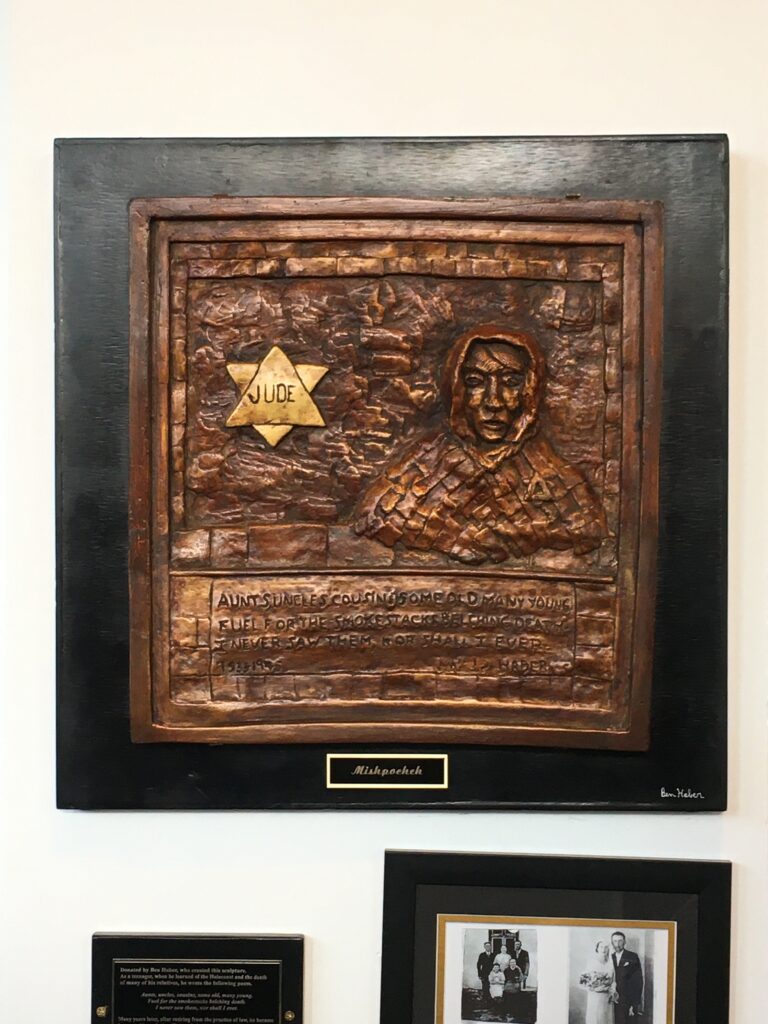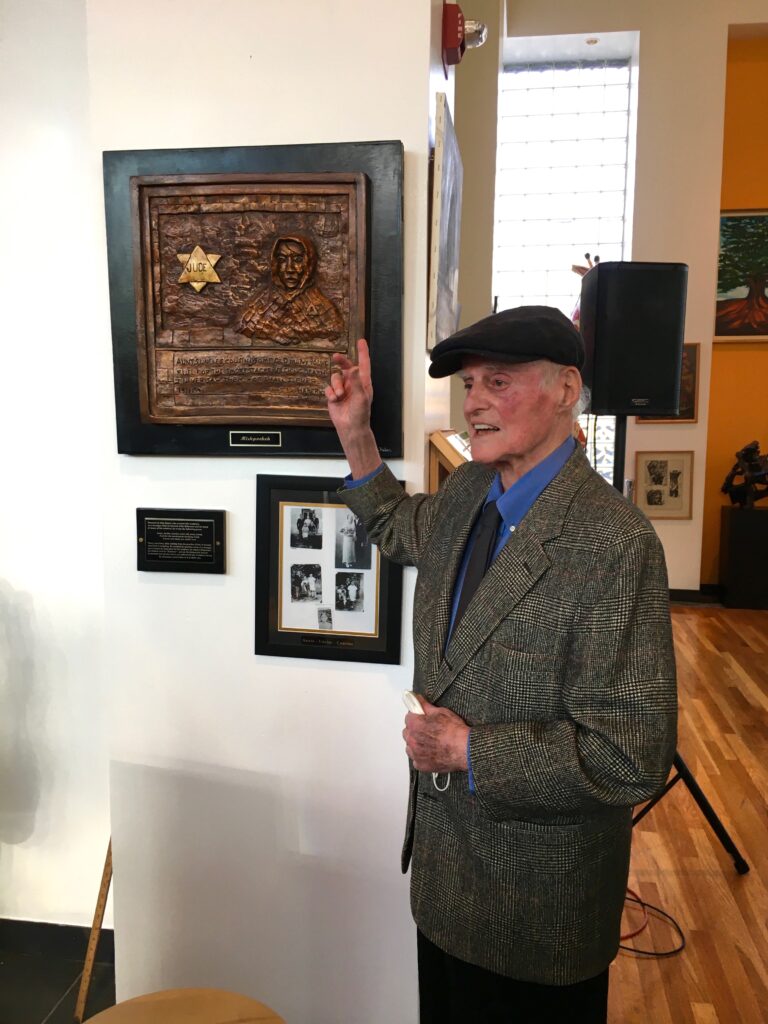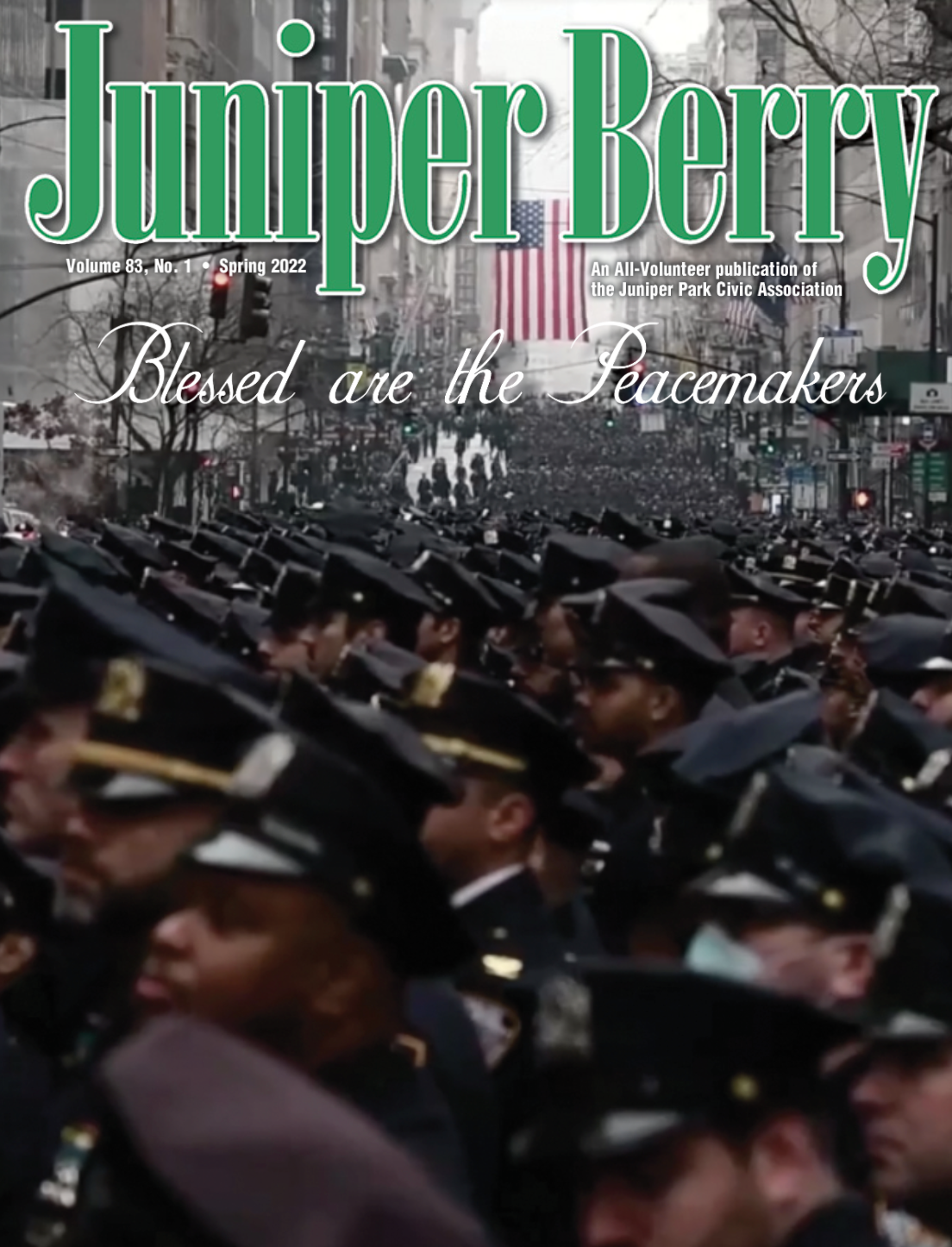When I was 72 years old, I retired after practicing law for 50 years. My wife, Ethyl, a retired schoolteacher, was at the time taking ceramics at Queensborough Community College. She told me there was a sculpting class in the room next to her class and suggested I look into it. I enrolled in the class and found the teacher, Phil Listengart, to be a warm person and a great teacher. I sculpted a variety of subjects.
At some point, I remembered a poem I wrote as a young teenager when I learned of the Holocaust and the death of my relatives:
Aunts, uncles, cousins
Some old, many young
Fuels for the smokestacks belching death
I never saw them, nor shall I ever
The poem inspired me to give thought to sculpting a Holocaust subject. I was unsure I could do so or what it would consist of. But I started and ended up after working on it for close to ten months, with what turned out to be so excellent it was exhibited in two Holocaust museums.
Recently, I made another copy which greatly exceeded the previous ones. The piece included important Holocaust details.
The bricks across the top and bottom are the Jerusalem wailing wall and the survival of Judaism. The background of the piece is not smooth, but rough, consistent with the subject terror. There is an elderly woman with a babushka, a shawl that women in many small villages in Eastern Europe wore. She is clothed in rags and on the left side is a Star of David. To the right is a yellow Star of David with the word “Jude.” That is the German word for Jew, that was required to be on all clothing worn by Jews. The face of the woman came out SO good, when looking at it, I always believed the woman would speak to me about the horror she lives with. It often brings tears to my eyes. Hitler bragged the Nazi regime would last 1000 years. It lasted no more than 12 years, and in the lower left had corner of the piece there are the dates 1933-1945. My name “Haber” appears on the right side but my first name Benjamin, is in Hebrew “Binyamin.” I did include my Holocaust poem. I named the piece “Mishpocheh,” the Yiddish word for relatives. I did not name it “My Mishpocheh,” because the Nazis persecuted many non-Jews. I intended all those who may view it may also have lost relatives in the Holocaust.
I recently became aware of the Irving Roth Holocaust Resource Center at Temple Judea in Manhasset, Long Island, New York. I contacted the Center, and the director came to my home to see the piece and I immediately agreed to donate it. Arrangements were made to have it installed in the museum and an unveiling date December 12 was scheduled. There were about fifty people at the unveiling which included my wife, my daughter Emily, my grandchildren, nieces and nephews, cousins, and friends. I considered the presence of family members important so it would a be a part of their ancestral memory.
The Resource Center did a great job installing the piece. The wall where it was placed faces a large window and the sun’s rays strike the face of my Holocaust woman, making her come alive.
The date of the unveiling, December 12, was the best day I had in the year 2021.





